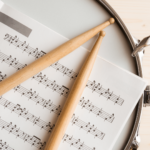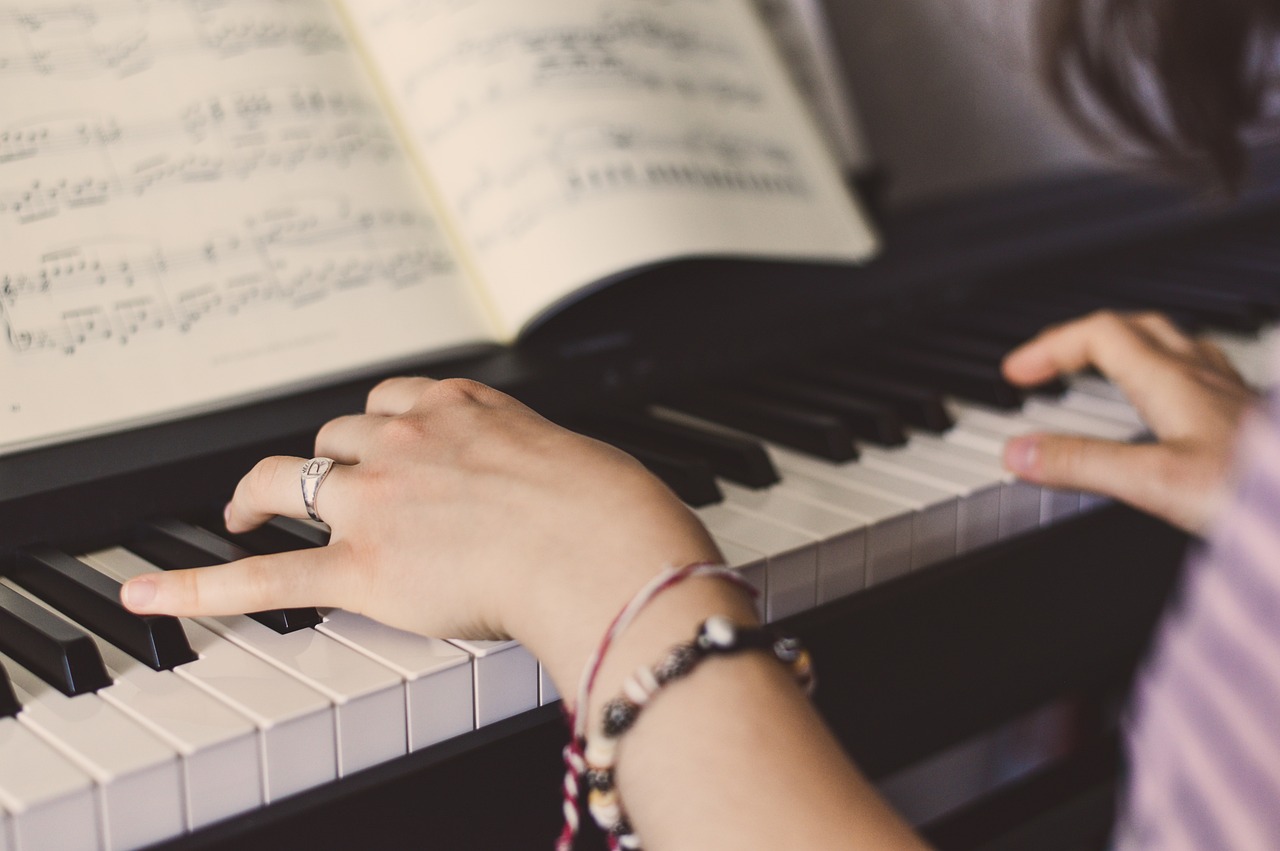How to read a drum music sheet?5 min read
Drum notation is a type of writing down music that’s specific to the percussion instruments. Understanding and reading drum sheet music can be very challenging for first-time students. By mastering how to read drum notation, students will be able to play a rhythm or beat with ease. This course will teach you how to effectively read and understand drum sheet music.
Contents
What is a drum music sheet?
Unlike sheet music, drum notation uses some of the same concepts but differs compared to usual sheet music. In drum notation, symbols represent the various parts of a drum set, so it’s useful for new players to learn how to coordinate their limbs so they can play properly.
How to read a drum music sheet?
There are a number of symbols that musicians should know when they start to read and play with drum notation.
The Staff
Like the notation for other instruments, the drum set has a set of horizontal lines otherwise called Staff. Where each part of the drum set is denoted with a symbol on the line or between the lines or the space. The lower bass and floor toms are at the bottom of the staff, with the snare and toms at the top of the staff. The drum clef which is denoted by two vertical boxes on the staff tells us that this music is for drums. It is similar to the Treble clef and Bass clef which denotes the notation for melodic instruments.
Time Signature
The time signature is one of the first things to look for when you see a drum chart. It is usually found on top of the left side of the chart and is preceded by numbers. Music is divided into chunks known as measures.
The top number denotes the number of beats in each measure. The number below tells you the value of the beat. A 4/4 time has 4 beats per measure and a 6/8 time has 6 beats per measure.
Kick / Bass Drum
A Bass drum is the biggest drum in the set and is commonly used with a foot pedal. The notation for a bass drum comes in the bottom space of a staff.
Floor Tom
A floor tom or low tom is a type of double-headed tom-tom drum that usually stands on its floor. It has three legs and produces a booming sound. The notation for a floor tom is usually next to the top of the staff and is located in the third space.
Tom 1 & Tom 2
Tom-tom drums are the most popular type of drums in most kits. They are played with sticks and do not have snares. Toms are notated on the first and line below the staff. The high tom typically has a note higher than the floor tom or bass drum.
Snare
The snare drum is the heart of a band’s kit, as it provides the backbeat and provides a strong bass line. It is commonly used to add depth and character to many songs. The snare drum’s pattern is based on the relationship between the bass drum and the snare drum. It gets its distinctive sound from the wire-shaped protrusions that are attached to the bottom part of the drum. Its notation is located on the second space of the staff.
Ride
The ride cymbal is commonly used for keeping a consistent rhythm in every beat. It is also used to cut through other instrumental sounds. It can be used as a crash cymbal and is commonly tapped with the tip of a stick. It is notated on the top line of a Staff.
Hi-Hat
The hi-hat cymbals are made of two cymbals that are mounted on a metal pole where the bottom cymbal is fixed and the top is movable with the foot pedal of the metal pole. It can be played by hitting one or two sticks or by closing and opening the cymbals with the foot pedal. The hi-hat notation is written above the top line of a staff, and is often the main time-keeping tool.
Clash 1 & Clash 2
Crash cymbals are typically the strongest accent markers in the kit, marking key vocal entries and major changes in mood. They are also commonly accompanied by a kick drum. The notation is located above the high hat, above the top line of the staff.
Now let’s try reading the repeat sign. A repeat is a type of repetitive pattern in drum music. It shows when you should go back and play another section. Many parts of the drum can be played in patterns, which means they’re repeated more than once in a row. There are several different repeat signs to understand in drum notation.
Repeat sign
Usually the drum patterns are played in patterns, which means they can be repeated multiple times. When a repeat sign is seen in a drum notation, the drummer should return to the beginning of the note and play the whole pattern again and continue the music.
One-bar Repeat sign
A one-bar repeat sign looks similar to the symbol as the percent sign. It shows two dots on a diagonal line. A one-bar repeat sign is used to repeat a measure in the drum notation for an additional measure and continue the music.
Two-bar Repeat sign
The two-bar repeat sign is a symbol that refers to repeating the same steps twice. It has two lines instead of one, and it shows the number 2. It works by repeating the previous two measures in the drum notation and continuing the music.
Hope all your queries regarding reading a drum music sheet are cleared here, you have learned how to read and understand drum notation, as well as what the different terms mean for different drum techniques. Drum notation can be very similar to other instruments, but it has some very important differences. Whether you’re a seasoned player or a novice, mastering the techniques to play drums will help you improve both mentally and physically. Learning Music or any instrument is a tip for holistic health in a way. Now grab your sticks and start playing your favorite music on drums.





